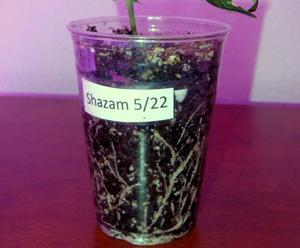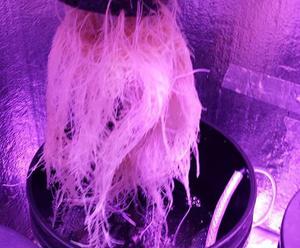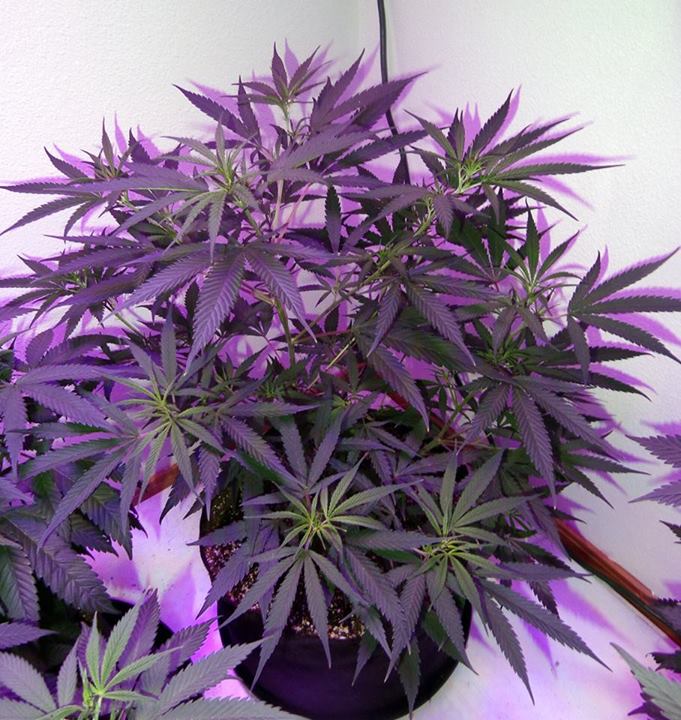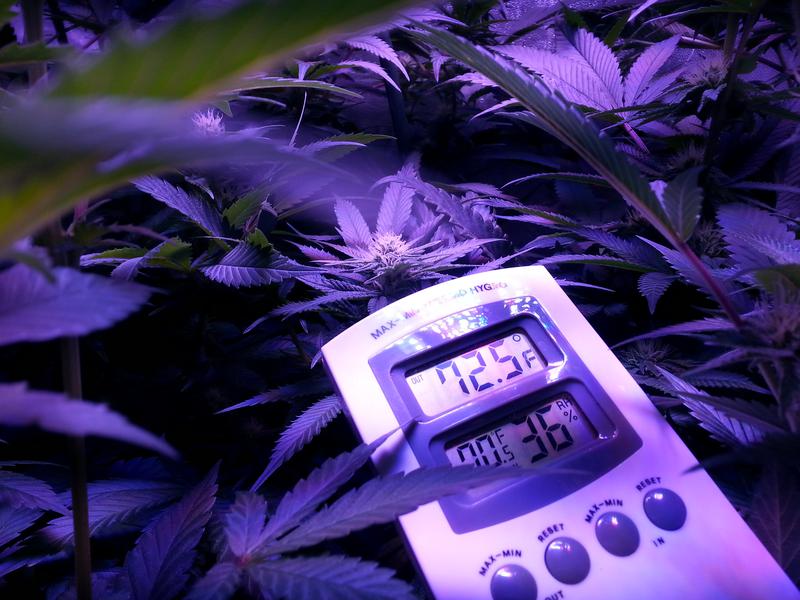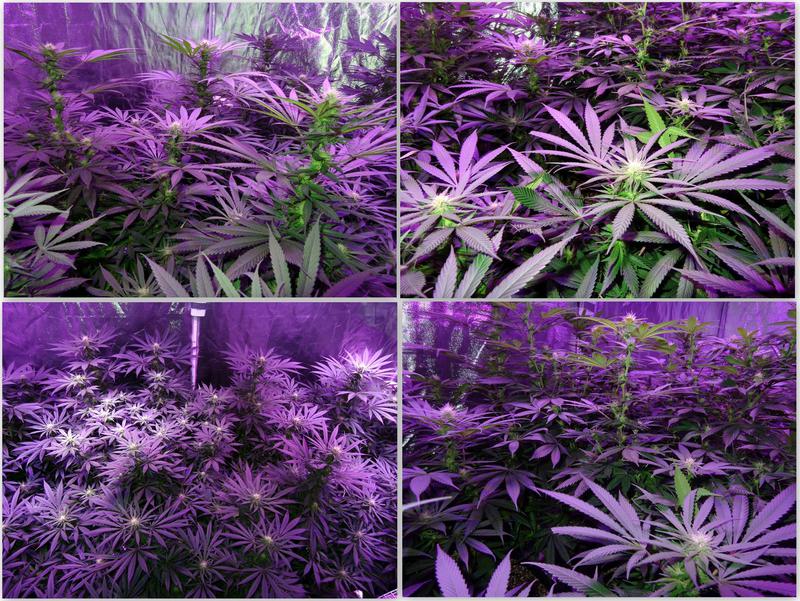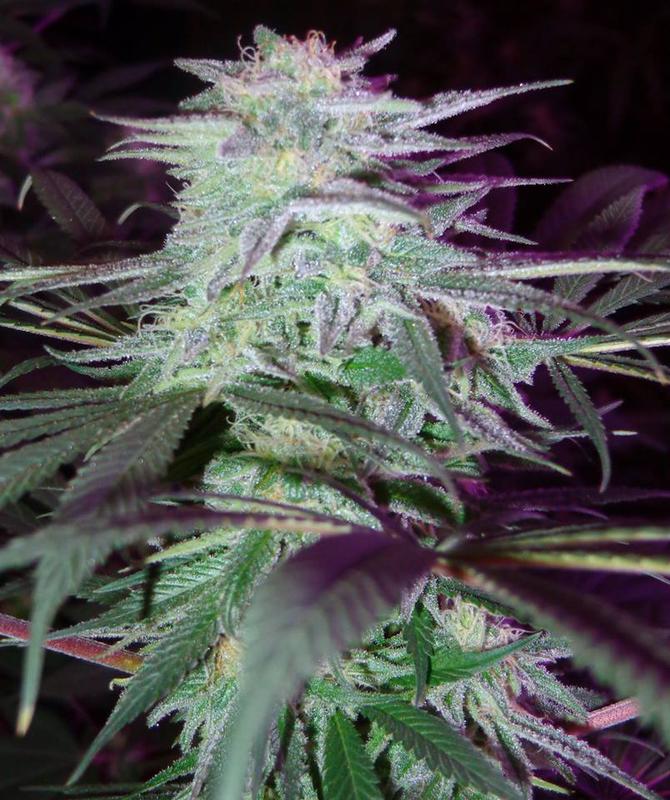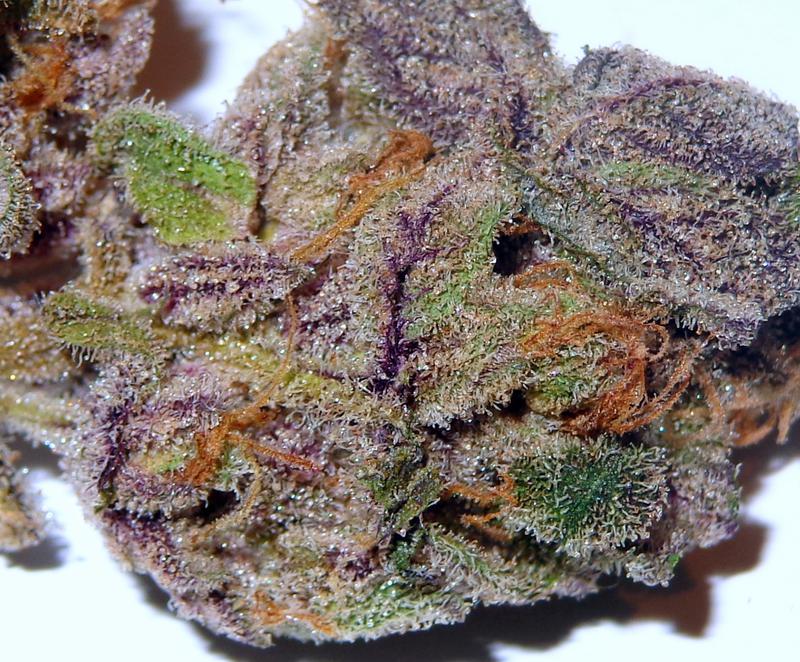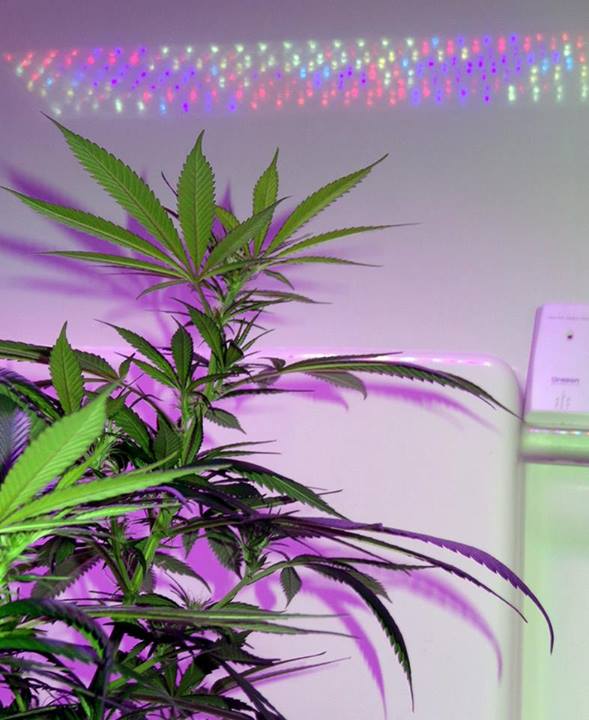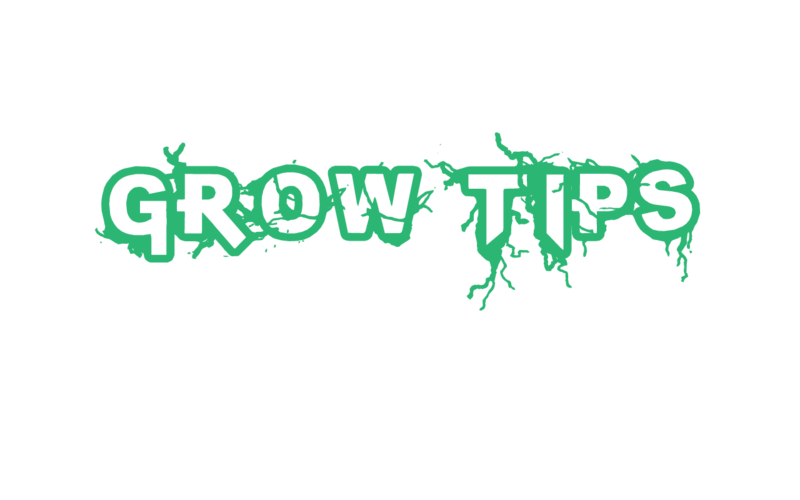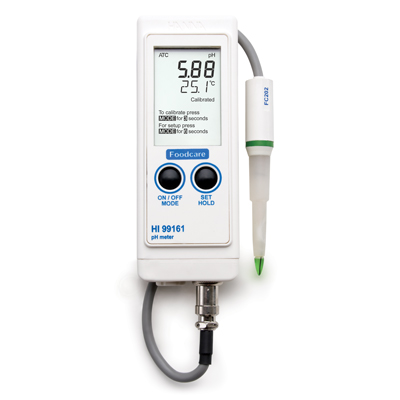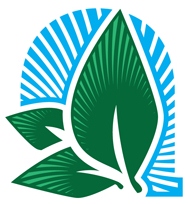888-960-4LED (533)
Customerservice@lushledlighting.com
Don’t pick your crop early! Time is money, the longer you wait the more valuable your crop becomes. If possible use a hand held microscope to examine trichromes,
If that's not an option, follow the seed company’s recommendation or even add
a week.
Just like all living things, your plants need specific nutrients not just to grow but to thrive. This is something you need to pay very close attention to. Here are some basics to look out for
Nitrogen deficiencies have a distinct pattern of yellowing. Yellowing starts as light spots on the older leaves until they wilt and die off, leaving the top part of the plant green. In severe cases, the entire plant will turn yellow. Nitrogen is used for the production of chlorophyll and amino acids, don’t run out until you are ready to flush your plants.
Phosphorous deficiencies have a distinct pattern of Purpling. Starting with purple appearing on the branches, then stems of leaves and then the veins of the leaf all turn purple. In severe cases, older leaves will turn completely purple continuing up the plant until even new growth is deprived. Bud size will be considerably smaller and underdeveloped, as will the root mass.
Potassium deficiencies are identified by dead, brown spots forming on the lower leaves. Leaves may also yellow and die. Do not get this confused by a nutrient burn. In severe cases, the plant stems and branches will become weak and fragile.
Calcium deficiencies will cause the medium to become acidic and lower your PH. A shortage of Calcium will appear as both Magnesium and Iron deficiencies. You may also check harvested plants for hollow stems as a sign of inadequate Calcium.
Sulfur deficiencies are easily identified by complete yellowing of all new growth.
Magnesium deficiencies are common and easy to spot. Older leaves will first turn yellow then it will spread throughout the plant. Left untreated, leaves will become crisp and dry when touched. This is different from a Nitrogen deficiency because the veins will remain green and dead leaves will be dry, not moist.
Manganese deficiencies will also turn the space in between veins yellow but on the newer growth. This will progress to brown spots resulting in dead spots on leaves. Plant growth will be stunted and if left untreated the entire plant will die.
Iron is an important component for the transportation of electrons for photosynthesis. A deficiency is identified by new shoots turning a pale yellow, while the veins remain dark green. This kind of mimics the magnesium deficiency, but a pale yellow. This deficiency starts with the lower and middle leaves and will progress to brown spots. In severe cases, new growth will lose the ability to produce chlorophyll, turn a pale yellow and completely stop growing.
EC/PPM to high
Eutrophication happens even to the best of us. Be on the watch for the first sign and prevent it from happening the next time. This is distinctly recognizable by browning of the tips of leaves. This can be the outer points or the outer ridges. Once you see a nutrient burn, growth on this part of the plant has stopped. In the vegetation stage there is time for new growth to emerge; in the flowering stage it can seriously stunt the growth of flowers.
Copyright 2013: Lush Lighting | Hydro LED Light | All rights reserved. 888-960-4LED
NOTE: Rooters Mycorrhizae works wonders with helping stimulate new root growth. Despite the rumors, Mycorrhizae will work very well in synthetic nutrient solutions consisting of nitrates. For aquatic hydro systems, the water needs to be enriched with oxygen. Mycorrhizae will not breed in water so additional applications are required.
NOTE: Water temperature is a huge factor in terms of plant health, cold water holds more oxygen molecules then warm water, roots need oxygen! For best results keep water temperature between 65° - 72°, and be sure to add lots of oxygen, this will prevent Pathogen’s from destroying your plants and allow them to grow faster.
Plants like nutrients but they are often not used properly. Understand what you’re giving your plants, the proper mixing order and frequency. Nutrient companies have complete product lines and useful tips. Utilize them. Monitor the electro conductivity (EC) of your water and media. Nutrients contain metals that are conductive. Controlling these levels boosts a plant's ability to process the nutrients you give them. Nutrients are wasted and actually build up in media when the proper EC is not used.
• Clones and seedlings should stay around 0.7 EC
• Adolescent plants should stay around 1.0 EC
• Fully developed plants should stay around 1.2 EC
NOTE: Monitor your garden closely. Watch for spotting, yellowing, browning or wilting. Your plants should be completely green, when they are not, quickly figure out what’s going on. Fix problems immediately. When you spot a problem do not delay in fixing it. Stay up all night if you have to. Some damaging things can’t be reversed. The quicker you fix the problem, the sooner the plants can begin to heal.
Photosynthesis & Lighting
Control Your Temperature & Humidity
Monitor the PH of your water and media. Invest in a Reverse Osmosis (RO) system. Most water comes out of a RO filter at a PH level of 6.5 and will rise to 6.8 after nutrients are added. If you’re using city water make sure it sits for 48 hours. This will not only allow the chlorine to dissipate but also allows the PH to stabilize. Most city water will fall on its own by two points! Do not let it fall while it’s in your soil. Well Water contains metals like iron, copper, magnesium and (in some rural areas) pesticides. A basic sediment filter in some cases is required. To monitor the PH and EC or PPM of your growing media, test the water before you put it on the plant. Then, test the PH and EC or PPM after it comes out of the media. The variance between the two will let you know if the media is higher or lower than what you’ve added.
Feeding Your Plants
Photosynthesis can only perform up to the efficiency of its weakest link. This is why fueling your plants with the correct type of energy is so important. Notice all of the activity in the blue region. Why would anyone think that plants are using yellow, orange or red over blue? Because those colors are cheaper and easier to create with less engineering hurdles. This is what consumer's have been taught to believe. Other attempts by lighting companies to fully utilize these highly energetic blue photons were futile. Not understanding how plants transfer energy only creates a bottleneck of stored electrons and causes stress. When other companies gave up and quit, Lush Lighting turned to science and nature to learn more. Engineering a real grow light is not easy. There are still cheap Led's out there. 100's of companies have produced 1000's of products that all failed in the field. Not Lush. Our lights are converting long time HPS growers to LED!
Light is the fuel and your media is the engine that aids in the performance of your plants performing photosynthesis. Almost every fuel and engine will perform differently. Only one is the best. Which one are you using? You would want to build the best engine for providing your plants with a way of using energy and Lush Lighting will provide your plants with more of it! If you want the best looking garden in your city, it will require both. Everyone who uses a Lush Light understands that it's cheaper to buy a real LED than it is to just operate a HID. Times have changed and you can trust that Lush Lighting will continue to invest into ways of providing plants with more energy to grow bigger and better.
Air is full of moving particles. As humidity increases, the amount of particles also increase. When temperatures rise, these particles become more active. The combination of the two will increase static pressure. This pressure will make it increasingly more difficult for your plants to breathe. This asphyxiation will increase until they suffocate at 55% humidity and 100ºF, or 70% humidity and 90ºF.
If the humidity in your garden is to high mold, mildew and other types of fungus can destroy your garden in a matter of weeks. Plants transpire water through tiny pores on the leafs called stomata. If the humidity is to high or low, photosynthesis will slow down. This decrease in photosynthetic activity effects the uptake of water and nutrients. Maintaining proper humidity levels is critical in order to keep your plants producing at their very best.
• Vegetating plants grow best in a 55% - 65% humid & 70º-75ºF environment.
• Flowering plants grow best in a 35% - 45% humid & 68º-72ºF environment.
NOTE: Do not grow plants under 24 hours of light. Plants store energy during the day and use it during the night. This allows them to heal and rest. Use quality media, nutrients and lighting to speed up growth.
Invest Into Testing Equipment
Nutrient Deficiencies
Follow us on Instagram, YouTube, Facebook, Twitter, Google+ or Tumbler. We have started a revolution, people are switching from HID to LED and producing a better crop for it! Join the Lush Family and give Jet Fuel to your plants!
More Grow Tips Coming Soon....



